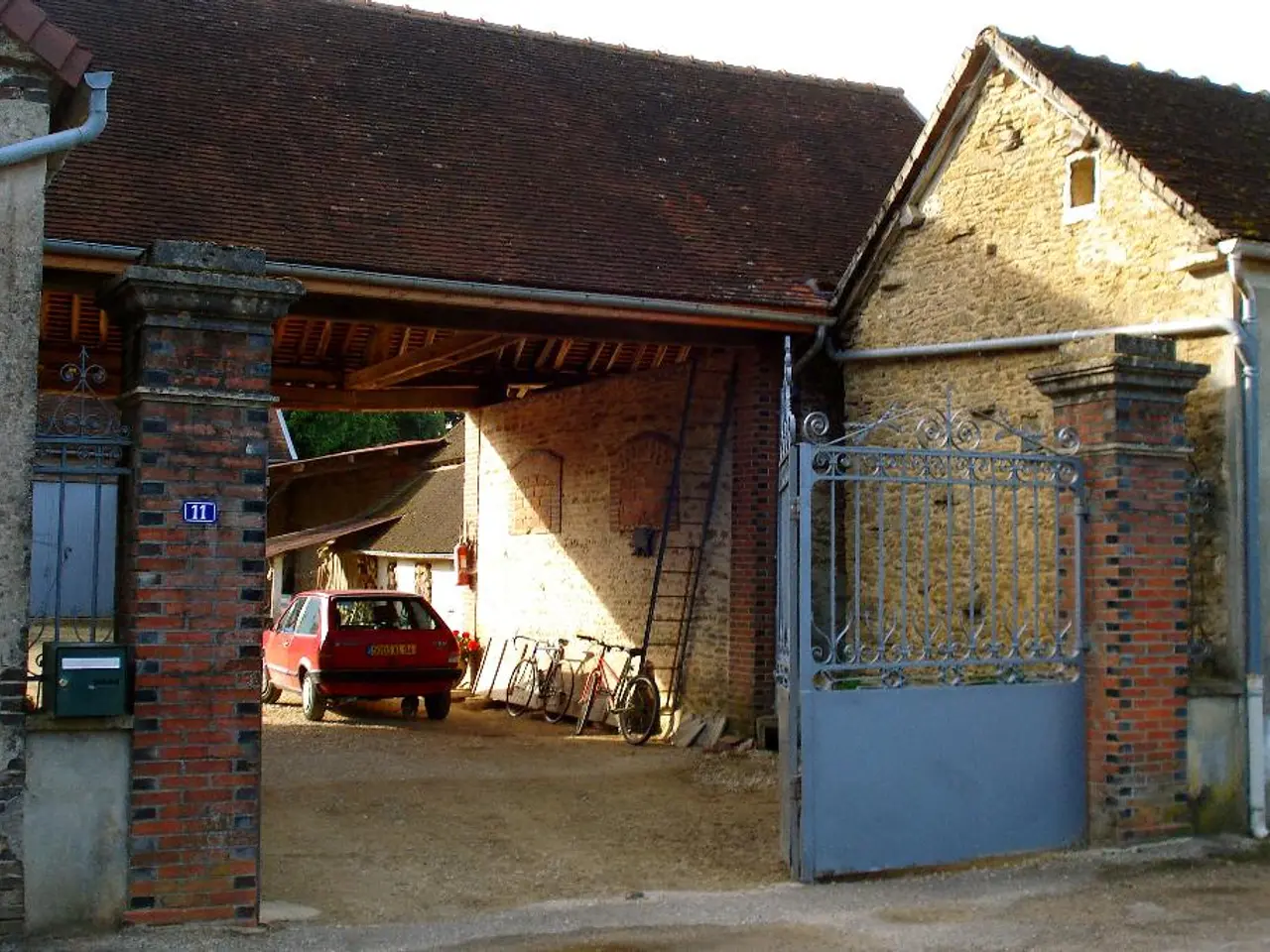Contemplations: Crimson Abode
In the heart of Bexleyheath, a detached, red brick house with tall chimneys and pointed windows stands as a testament to a bygone era. This is the Red House, a significant building in British architecture that marked a departure from Victorian conventions towards modern architectural thinking.
The Red House was designed by William Morris and Philip Webb, two instrumental figures in the Arts and Crafts movement. Morris, Webb, and John Ruskin were the driving forces behind this movement, emphasizing craftsmanship, material honesty, and functional, human-centered design.
The innovative design and layout of the Red House were a stark contrast to Victorian norms. Philip Webb designed an 'L-shaped' plan, with the front wing containing main living spaces facing north and the rear wing containing secondary rooms facing south. This layout broke with the segregated Victorian house layout, encouraging social interaction across genders.
The house prominently uses red brick instead of the common white-painted stucco, and displays an honest expression of materials such as exposed brick arches, red flagstones, and timber framing inspired by vernacular British architecture. This contrasted with the stylistic excess and ornament typical of Victorian design.
The building integrates asymmetrical and varied window sizes tailored to the function of each room, steep roofs, wide porches, and tall chimneys, creating a picturesque visual composition influenced by historic but vernacular British forms, not classical revival styles.
Morris, his wife, and artist friends decorated and furnished the house with handcrafted stained glass, furniture, fabrics, and wallpaper, showcasing the ideal of art and craft synergy and rejecting industrial mass production.
The Red House was a physical manifestation of Morris’s ideals linking art, social structure, and craft as personal expression and joy in work, rejecting the architectural profession's norms of his time.
William Morris pursued political interests to reinforce his beliefs, eventually becoming a member of the Liberal party and later founding the Socialist League. Despite the expensive nature of Morris, Morris, Marshall, Faulkner & Co's products, only serving the rich, the Red House's interior showcases Morris's affection for truth in materiality, simplicity, and handcraft, as seen in the cottages, barns, and almshouses of ordinary people at the time.
The Pre-Raphaelites, including Morris, shared a fascination with medievalism and favored a return to Romantic ideals, rural simplicity, and early Italian painting. Morris remained close throughout his life to the painter Edward Burne-Jones, who became a leading figure within the Pre-Raphaelite circle.
In 1861, Morris and Burne-Jones co-founded the decorative arts firm Morris, Marshall, Faulkner & Co, producing carpets, furniture, glass, fabrics, and wallpaper. Morris bought a site in the Kentish hamlet of Upton (now Bexleyheath) for the Red House, which he named 'The Pilgrim's Rest'.
John Pardey wrote an essay about the Red House, highlighting its significance in British architecture. The Red House remains a prototype of modern architecture, influencing later Arts and Crafts style houses and British domestic architecture by placing emphasis on honesty of materials, craftsmanship, social space arrangement, and integration of art and function.
Morris worked under the supervision of Philip Webb before becoming unsatisfied with his work. Despite this, the collaboration between Morris and Webb resulted in a revolutionary architectural masterpiece that continues to inspire architects and designers today.
The Red House, designed by Morris and Webb, was a significant achievement in the Arts and Crafts movement, shaping both business practices and home-and-garden design with its emphasis on craftsmanship, material honesty, and functional, human-centered spaces. This innovative lifestyle concept, as demonstrated by the Red House, contrasted dramatically with the conventions of Victorian era architecture. The building's history also marked the duo's departure from traditional Victorian norms, influencing future home-and-garden designs and British domestic architecture with its focus on honest materials, craftsmanship, and integrated art.




